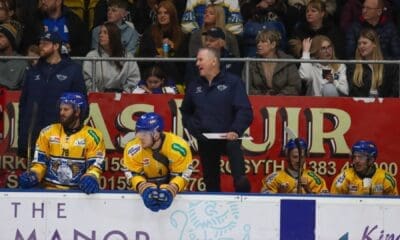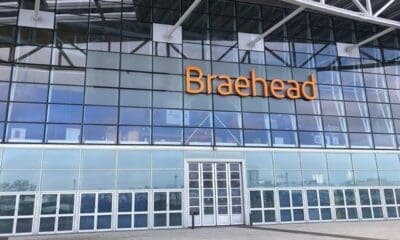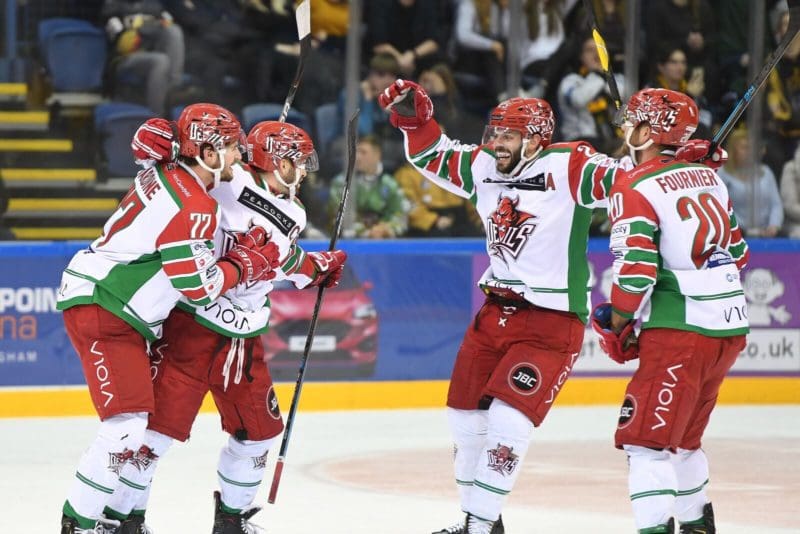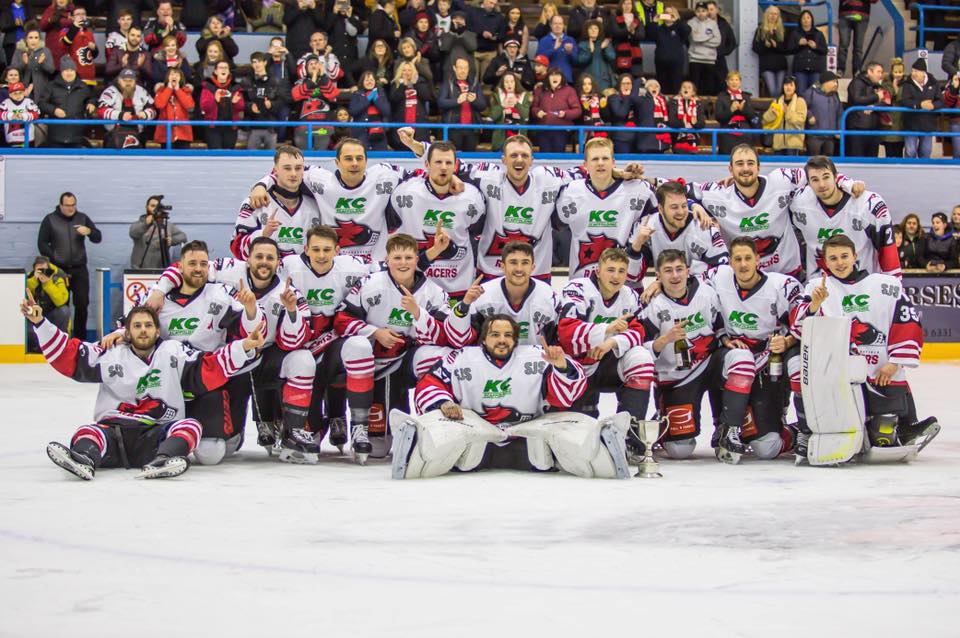
The latest EIHA statement arrived on the social media doormat on Wednesday with a slightly uncomfortable thud.
As expected for NIHL1 South the format for 17/18 is nine teams.
Basingstoke Bison (3rd in the EPL), Peterborough Phantoms (4th), Swindon Wildcats (6th), Bracknell Bees (9th) – otherwise known as the ex-PIHL clubs.
They will join Invicta Dynamos (2nd in D1S), Streatham IHC (3rd), London Raiders (5th), MK Thunder (7th), Cardiff Fire (promoted from D2) – the NIHL clubs.
The fate of Chelmsford Chieftains, Oxford City Stars and Solent Devils hangs in the balance, but it is expected they will be included into D2.
So, one of the most significant things here was who stuck their head above the parapet, took a chance and withdrew.
Chelmsford, Oxford and Solent, who placed 1st, 4th and 6th respectively last season, now look likely to be given respite in D2 with the potential that a knock on D3 could form.
However, any club that remained in D1 and for whom next season results in last place, will not be allowed to drop down.
How one year a team can easily win a league and demote itself, but the next year one can come bottom and be denied that same right is baffling, so when the news comes about D2 let’s hope it all makes perfect sense.
If as expected Chelmsford, Oxford and Solent arrive in D2 then jumping early will have been rewarded with understanding. For those remaining in D1 battling on, helping to sustain the new format could result in one of two things for the bottom-placed club. Struggle on for another year or fold. How does this make for a workable model?
It has been made clear that the door to D2 will be firmly locked. It is not however clear what the plan is if one of the four ex-PIHL teams were to decide to give the Elite League a go. Add to that the possibility of one or more lower placed clubs folding this would put the league back where it started – with seven teams, which we are told is unsustainable.
Interestingly a statement issued by London reveals they are buoyed up and ready for the challenge and were seemingly building towards the PIHL in any case.
With a shiny new rink on the horizon and a new coaching structure in place this is a club with high ambitions and a positive outlook on the current situation.
So why weren’t they supported in joining the PIHL? Was it simply a step change too far for them at that stage? Perhaps the PIHL could have continued as it was with London waiting in the wings to be included upon their return to Romford.
Will we see the collapse of D1S only to find the PIHL resurrected next season with the original seven? Much will depend on how the season plays out in the south and also in the north.
The 2017/18 season may have been better served by a seven team PIHL with a cross-over cup. It’s still not clear why Ken Taggart deemed it unsustainable. Is there clarity and transparency about the reasoning behind this entire restructure for all the clubs affected?
Clubs may have been unhappy with the cross-over cup in the past, but if it were a choice between a regular NIHL with separate PIHL and compulsory cross-over cup or an integrated NIHL/PIHL which is the most likely option the clubs would have chosen?
It’s interesting to consider that if the original seven PIHL clubs had stayed together there would have been 24 competitive games for each club (based on two home and two away) which could have been added to with a cup competition.
As it stands the four ex-PIHL clubs in the south will now get just 12 competitive games each (when they play each other) with the expectation they will then thrash the NIHL teams in the other 20 games. This hardly seems like an appealing and sustainable standard for anyone.
NIHL teams on the other hand will have 16 competitive games and 16 games where they may suffer significant losses. Which teams are likely to retain their support in those circumstances? Those doing the winning or those on the losing side?
Before I forget, hoorah for the play-offs. Eight of the nine teams will go through to the play-offs with the ninth team being offered momentary respite from a miserable season before remembering that they aren’t going to be allowed down to D2 anyway.
If first place plays eighth, second plays seventh and so on, how can that ever be a joyous proposition for the NIHL teams when they are more likely to be those placed fifth to eighth?
Fingers crossed there will also be an announcement as to the naming of the new league. Surely those who were to be honoured with their names heading up the Conferences won’t be forgotten in the melee.
The knock on effect to D2 cannot be ignored. With nowhere to go you have to feel for those clubs who have limited resources with players signing pay-to-play contracts who will suddenly find themselves up against the likes of Chelmsford and Oxford – unless of course D3 is created.
So the timescale for restructure did not adequately take into account the enormity of the change and its impact on the teams at various levels.
Conversations should have been happening one-on-one well before the end of the season. The proposals should have been provided prior to the meeting and clubs should have been able to have honest and private dialogue about what would and wouldn’t work.
This blog can’t even begin to consider the implications for coaches, players and fans, the financial aspects of this new structure on clubs or indeed what ‘the NIHL1 standard’ mentioned in the EIHA statement actually means.
In fact, it barely scratches the surface and others will no doubt be better placed to write meaningful and perhaps more upbeat comment.
As an eternal optimist I would love this blog to be about how bright the future looks for ice hockey across the various tiers, however it’s hard not to see the downsides at this point. Having said all this, I honestly hope it all comes together and works.
In simplistic terms as posted in a previous blog – EPL v NIHL or fruitcake v chocolate fudge cake – you can’t make a chocolate cake out of fruitcake ingredients.
The frocolate cake is upon us folks, step right up and take the taste test.
(Image permission: John Scott)












Jayne
25th May 2017 at 3:57 pm
You haven’t mentioned the impact of all this change will have on junior hockey development in the UK
Patrick Napier
25th May 2017 at 11:48 pm
Nothing has been said about the agreement the EPL teams had agreed well before the season end to continue with the 7 teams but reducing the imports from 5 to 3 & no Import netminders.So why did Taggart stick his nose in & cause the problems we now have.We are back to the Heiniken League days & we know where that ended
Tony Bailey
26th May 2017 at 9:38 am
Surely it would have been best all round if the EPL teams were invited to join the Elite League en-masse, once Guildfiord and MK had decided to make the move? Perhaps with some rule changes on imports (fewer imports) etc, to enable them to compete financially. An Elite league that is so reliant on imports cannot be good for the game in the UK anyway, long term.
Colin Grigson
27th May 2017 at 4:16 pm
A few years ago there was a cup competition with EIPL and NIHL teams. I don’t know if the EIPL teams put out their best teams, but the 3 games I saw at Chelmsford were the best games I saw all season. Yes, Chelmsford lost them all but they were close and much more interesting that watching Chelmsford beat MK 14-0. Would the Chelmsford faithful prefer to watch them walk D2 next season or watch better quality matches in a stronger league, albeit one they aren’t going to win. I know which I would prefer
Keith Andrew
28th May 2017 at 9:17 pm
I agree with Colin I want to see compatitive hockey and may the best team win which may not be Chelmsford who I support. I don’t know why we have got into this mess, more about egos than what is good for the game. If we want to build on the Nationl Team and the success they had then there has to be a limit to the number of imports.
Tony Bailey
30th May 2017 at 8:46 am
Completely agree Keith, that limit has to be applied right at the top level too.
Then teams like MK Lightning won’t have to sell their soul to compete.